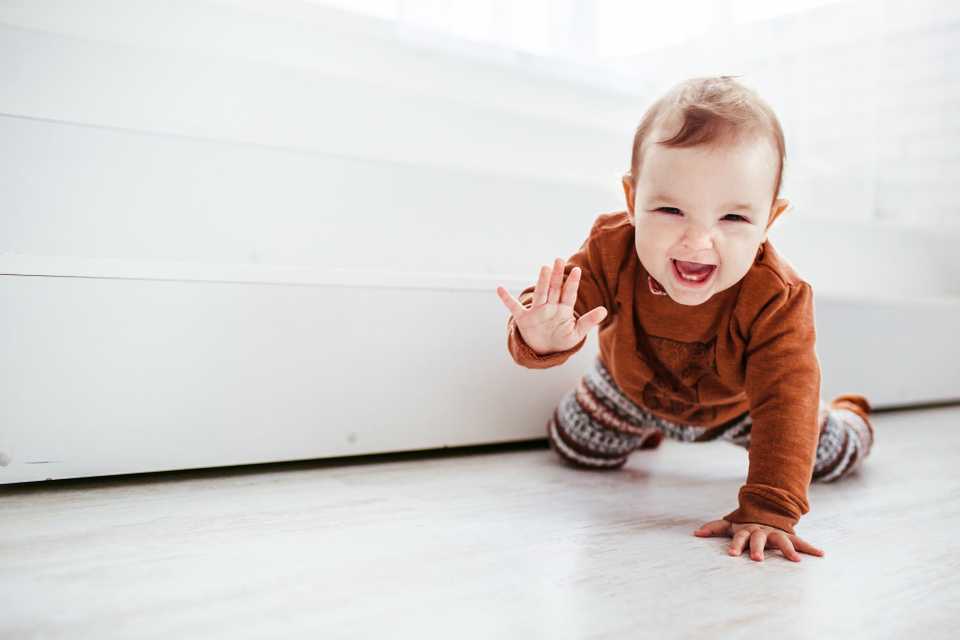- Learning to juggle
- Prepare yourself to learn how to juggle
- Prepare to support your child in developing new skills
Let’s talk about MOVEMENT! Movement leads to brain development. Within the first year of life a child makes a huge amount of work from being totally dependent on others to being able to run freely!
Joyful child crawl. Created by freepic.diller - pl.freepik.com
Have you ever tried to learn how to juggle? If not I’d recommend this to you, if not for yourself then do it to understand your baby better. Starting to juggle for adults is like starting to crawl or walk for the first time for kids (but juggling is a lot easier).
Learning to juggle
When you are learning to juggle at the beginning you might drop the balls frequently. (Like when a baby falls when they try to crawl for the first time). After that it is thoughtful to rethink the process and analyse how to move your body in order to throw and catch the balls. (Like your baby takes a long time before moving hand after hand.) Then when the process of learning is finished you would be able to juggle balls without even looking at them. (This resembles a baby who can crawl, walk, or run without even thinking). Your body would develop the neural connections that would guide muscles how to move to throw and catch the ball.
Prepare yourself to learn how to juggle
Here are few important tips if you want to learn to juggle:
- Space for juggling - if your room is too small it might be hard to juggle.
- Propper tools - here at least you would need (3) balls or oranges
- Observation - if you observe other people when they juggle it might be easier to figure out how you can do it
- Repetition - to master new skill you would need to repeat the juggling routine
- Do it yourself - You cannot let someone else juggle for you - when you learn to juggle for yourself you would feel joy.
- Focus - if someone would interrupt you all the time it would be hard for you to learn.
- Additional motivation - you can try looking at yourself in the mirror, or use good quality balls.
Children need to have space to move around. (…) If we wish to promote the integration of the human being, the motor skills should always be used in service of mind
— S. Montanaro, Understanding the Human Being
Prepare to support your child in developing new skills
Much like with you learning the juggling, to promote the movement of the newborns and babies you could focus on the same aspects:
- space for movement - e.g. floor bed or blanket/mat on the floor for daily activities and sleep, no distractions for vision
- possibility to succeed within the environment - toys of proper size and shape, in the distance that gives adequate challenge but yet chance to get them
- Visual observation and then reproduction - babies observe the environment constantly and try to copy what we are doing
- Repetition and focus - key ingredient to master the skill
- Self-satisfaction - babies don’t need prizes or approval, so you don’t need to clap your hands or sing songs. (You got me, this is different. Adults need to be praised. This is not the case for the babies as their development is driven by the magical force of HORME. They praise themselves and have intrinsic motivation.) PRO TIP, I know you are happy when your child learns a new skill. Rejoice yourself and celebrate with your partner instead. Let your child feel internal satisfaction.
- Interesting objects that serve as stimulus for movement - e.g. mirror on the wall for the baby to see himself; hanging mobiles, balls, rattles
